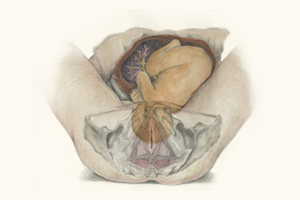A BRIEF HISTORY OF CHILDBIRTH
In pre-classical times, very little attention was given to the difference between genders in medicine. Childbirth was the only circumstance acknowledged as exclusive to females, and even that was paid little professional attention. Not until the 5th century BC in Greece did teachings appear explicating a branch of medicine geared specifically towards women.1
Little information about the specifics of childbirth techniques and knowledge exists for the time frame between the 5th and the 15th century. In terms of social mores, however, the birthing chamber was the woman’s place, strictly off limits to men. So much so, that in 1552 a “Dr. Wertt of Hamburg … entered a lying-in room dressed as a woman so that he could observe what happened. He was burned at the stake for such impropriety.”2 There is much research showing that childbirth was primarily in the hands of midwives, who had no formal schooling and were mostly illiterate.3 Birth stools were frequently used for delivery, which were chairs with reclining backs and a large hole cut out of the seat. The midwife would squat or sit on the floor in front of the mother, to receive the baby and the placenta into her lap. If labour was prolonged it was common to loosen the garments of the mother and then lift her by her armpits and let her fall as heavily as possible as if to shake the baby out of the vagina. An alternative was to tie the woman to a ladder and then lift it up and bang it down on the floor several times.4
Tools did not exist at this time to aid in the delivery of babies, making delivery an event based on female knowledge, experience, intuition and tactility, but also one fraught with medical risk. It would not be until the 18th century that men would begin official medical training in the arts of midwifery, and tools such as the forceps were to be frequently used in the process. ➡
NOTES | 1. King, 2007-- 2.
Rhodes, 1994, p15-- 3. Rhodes, 1994--
4. Rhodes, 1994
IMAGES | Anatomy of the gravid uterus | artwork by Stef Lenk

